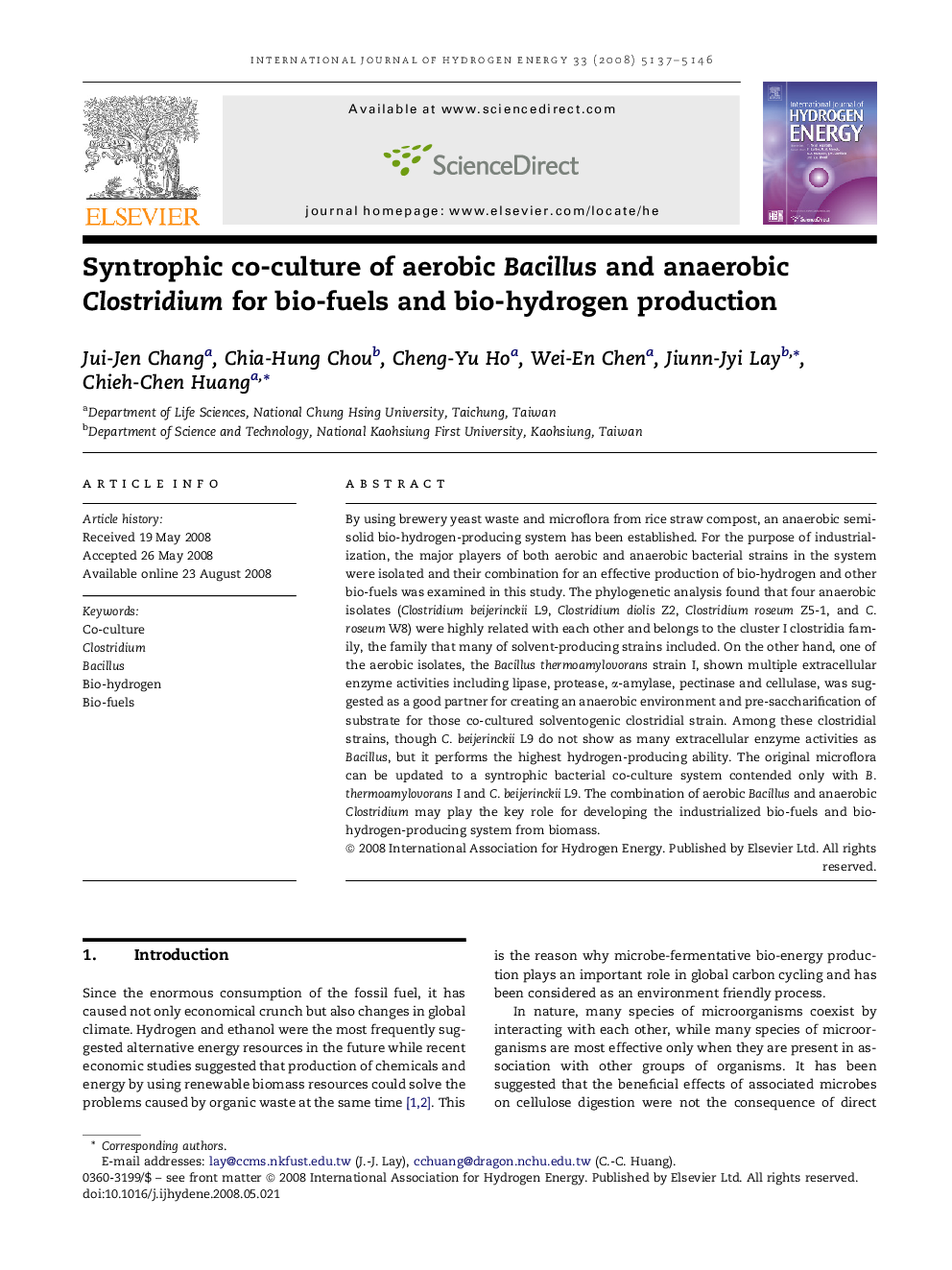| Article ID | Journal | Published Year | Pages | File Type |
|---|---|---|---|---|
| 1281428 | International Journal of Hydrogen Energy | 2008 | 10 Pages |
By using brewery yeast waste and microflora from rice straw compost, an anaerobic semi-solid bio-hydrogen-producing system has been established. For the purpose of industrialization, the major players of both aerobic and anaerobic bacterial strains in the system were isolated and their combination for an effective production of bio-hydrogen and other bio-fuels was examined in this study. The phylogenetic analysis found that four anaerobic isolates (Clostridium beijerinckii L9, Clostridium diolis Z2, Clostridium roseum Z5-1, and C. roseum W8) were highly related with each other and belongs to the cluster I clostridia family, the family that many of solvent-producing strains included. On the other hand, one of the aerobic isolates, the Bacillus thermoamylovorans strain I, shown multiple extracellular enzyme activities including lipase, protease, α-amylase, pectinase and cellulase, was suggested as a good partner for creating an anaerobic environment and pre-saccharification of substrate for those co-cultured solventogenic clostridial strain. Among these clostridial strains, though C. beijerinckii L9 do not show as many extracellular enzyme activities as Bacillus, but it performs the highest hydrogen-producing ability. The original microflora can be updated to a syntrophic bacterial co-culture system contended only with B. thermoamylovorans I and C. beijerinckii L9. The combination of aerobic Bacillus and anaerobic Clostridium may play the key role for developing the industrialized bio-fuels and bio-hydrogen-producing system from biomass.
